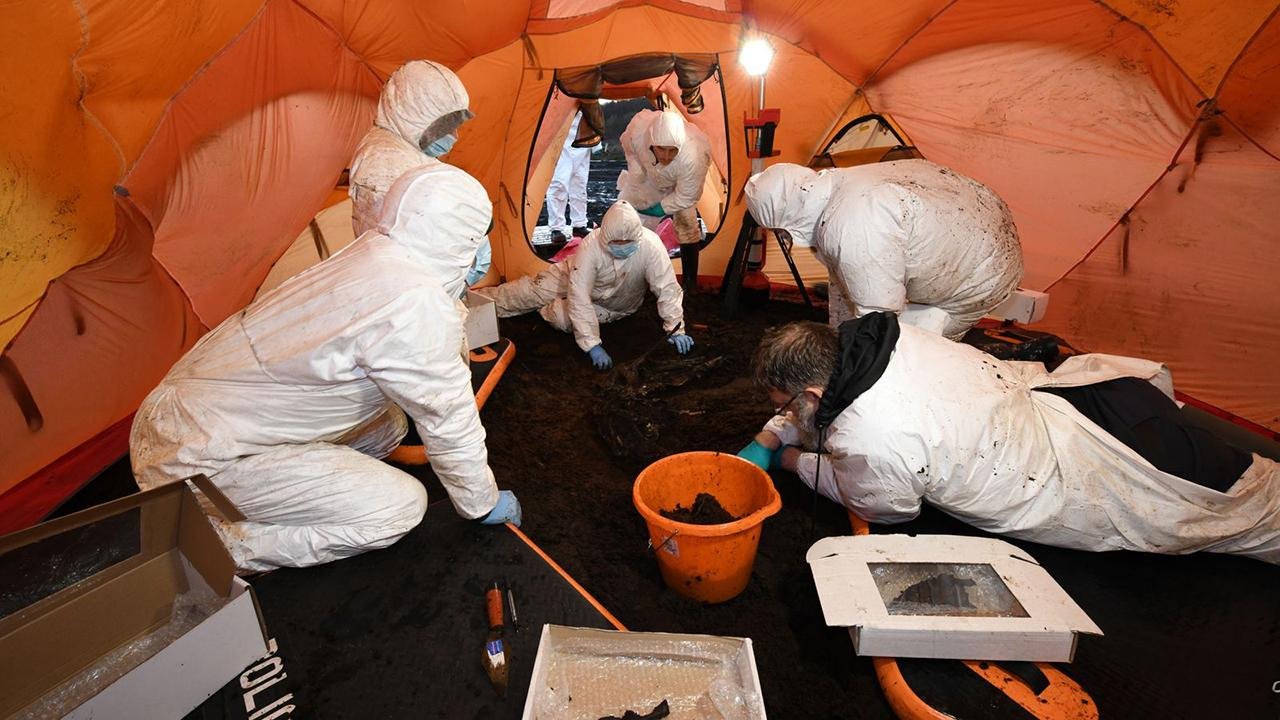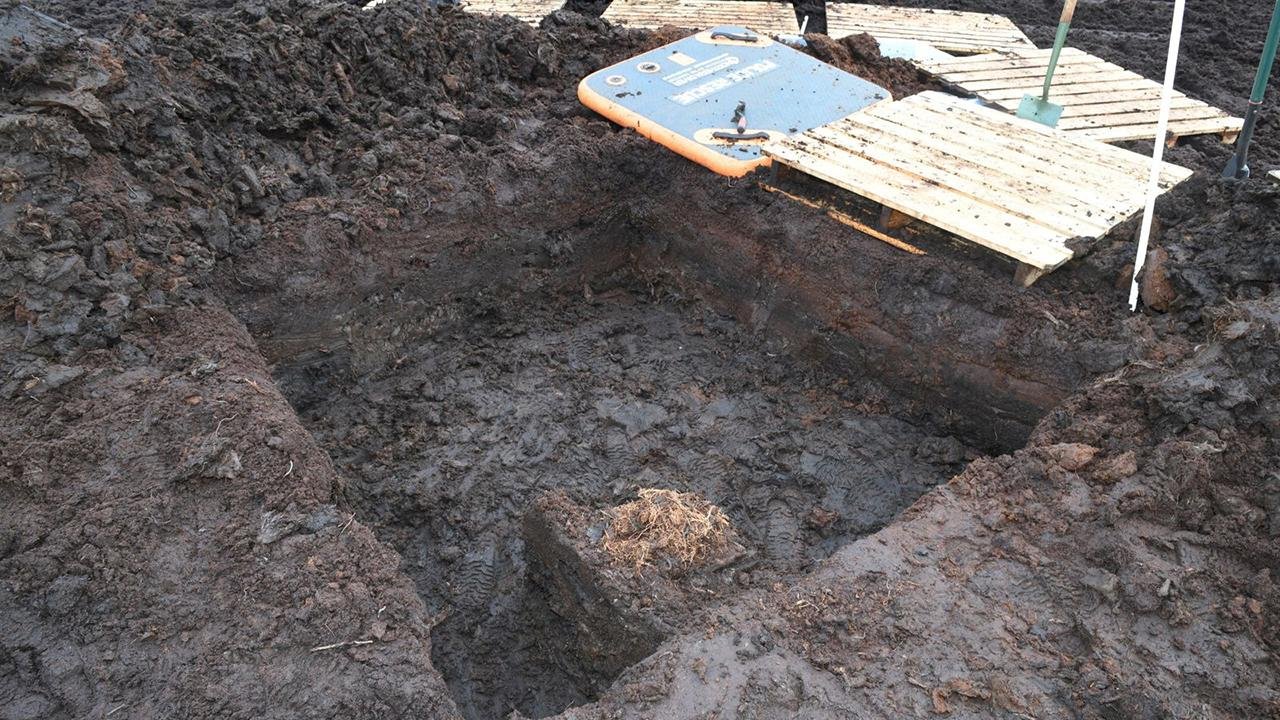The Police Service of Northern Ireland’s (PSNI) Archaeological Unit has recovered well-preserved human remains from a bog in Bellaghy, County Londonderry, dating back over 2,000 years.
 The Police Service of Northern Ireland’s Archaeological Unit has recovered well-preserved human remains from a bog in Bellaghy. Credit: Police Service of Northern Ireland (PSNI)
The Police Service of Northern Ireland’s Archaeological Unit has recovered well-preserved human remains from a bog in Bellaghy. Credit: Police Service of Northern Ireland (PSNI)
The find, initially reported in October 2023, has been described by Detective Inspector Nikki Deehan as a “unique archaeological discovery for Northern Ireland.”
The excavation began when archaeologists were alerted to human bones on Bellaghy peatland, subsequently revealing a skeleton believed to be that of a teenage boy.
The remains, carbon-dated to be between 2,000 and 2,500 years old, represent a significant find due to the body’s exceptional preservation, featuring both bone and partial skin, as well as fingernails and toenails.
 The human remains were found at peatland in Bellaghy. Credit: PSNI
The human remains were found at peatland in Bellaghy. Credit: PSNI
Detective Inspector Deehan said: “Excavations first uncovered a tibia and fibula, and a humerus, ulna, and radius bone relating to the lower left leg and right arm respectively.” Further investigations revealed additional bones, including those of a lower left arm and a left femur, protruding from the ground.
The post-mortem examination conducted by a certified forensic anthropologist determined that the individual was likely a male aged between 13 and 17 at the time of death.
Remarkably, unlike some other bog bodies, this discovery presents a rare case where both bone and skin remain intact, providing a unique opportunity for research. The head of the body is missing, leaving questions regarding whether it was removed before or after death.
While the cause of death remains unknown, the PSNI’s dedicated Body Recovery Team continues to conduct thorough investigations.
 Full body at Post Mortem. Credit: PSNI
Full body at Post Mortem. Credit: PSNI
Dr Alastair Ruffell from Queen’s University Belfast, which conducted the radiocarbon dating at the 14Chrono Centre, said: “This is not only significant because it’s Iron Age, but also because of the landscape situation.”
The boglands north of Lough Neagh, where the discovery was made, hold geological and historical interest, especially considering the work of the late poet Seamus Heaney, who had a fascination with boglands.
John Joe O’Boyle, Chief Executive of Forest Service in Northern Ireland said the ancient bog body was discovered on land owned by the Department of Agriculture, Environment, and Rural Affairs, and efforts are underway to transfer it to National Museums NI for further examination and preservation.
The discovery also marks the first time radiocarbon dating has been applied to a bog body in Northern Ireland, according to Detective Inspector Deehan.
The examination conducted by Queen’s University Belfast involved two phases of high-resolution ground-penetrating radar survey, revealing the remains approximately one meter below the current land surface.





